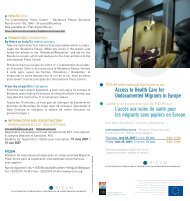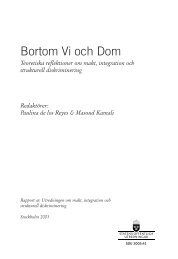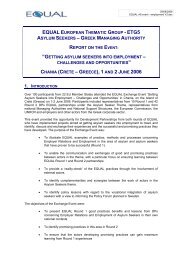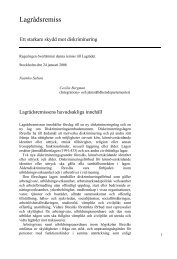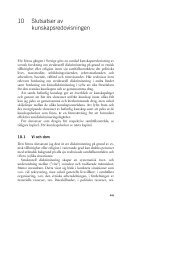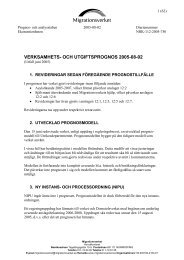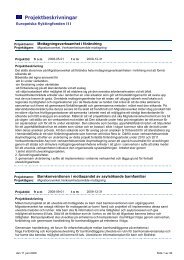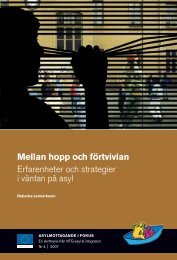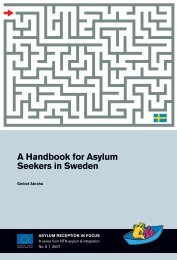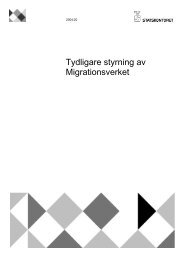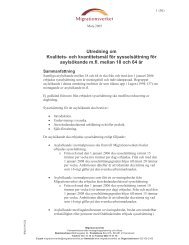Rapport Integration 2002
Rapport Integration 2002
Rapport Integration 2002
Create successful ePaper yourself
Turn your PDF publications into a flip-book with our unique Google optimized e-Paper software.
the swedish integration report for <strong>2002</strong><br />
a summary<br />
One of the most important tasks of the Swedish<br />
<strong>Integration</strong> Board is to observe and evaluate developments<br />
in Swedish society from the viewpoint of<br />
ethnical and cultural diversity. One way in which<br />
we fulfil this obligation is by presenting an annual<br />
report on the subject, the <strong>Integration</strong> Report. Last<br />
year’s report was the first in what has developed into<br />
a regular series.<br />
The <strong>2002</strong> <strong>Integration</strong> Report contains an array<br />
of basic facts, reflects on current developments and<br />
describes progress in a number of fields that are of<br />
central importance for integration. This information<br />
provides a basis for policy changes and for action on<br />
behalf of integration and diversity in Sweden. The<br />
report describes advances, stumbling blocks and<br />
opportunities in the integration field in the following<br />
areas:<br />
• Employment<br />
• Education<br />
• Housing<br />
• Refugee introduction programmes<br />
The labour market<br />
A growing number of foreign-born inhabitants have<br />
gained employment on the Swedish labour market in<br />
recent year. During the economic upswing of the late<br />
1990s, employment increased more rapidly among<br />
persons born abroad than among native Swedes.<br />
The general decline in employment that occurred in<br />
<strong>2002</strong> affected foreign-born and Swedish-born inhabitants<br />
in equal measure and did not strike those<br />
born abroad excessively, as it did in the early 1990s.<br />
This suggests that a sustainable improvement in the<br />
employment position of foreign-born inhabitants is<br />
under way.<br />
However the employment gap between those born<br />
abroad and those born in Sweden remains substantial.<br />
Just over 61 per cent of foreign-born inhabitants<br />
are in employment, compared with just under 76 per<br />
cent of native Swedes. Consequently, there is still a<br />
gap of around 15 percentage points between the two<br />
categories.<br />
A person’s employment prospects improve the<br />
longer he or she stays in Sweden. Immigration means<br />
developing new social networks and building up basic<br />
skills in the new language.<br />
In the case of immigrants who have lived in Sweden<br />
for up to four years, employment is 25 percentage<br />
points lower among foreign-born men and 35 percentage<br />
points lower among foreign-born women than<br />
among Swedish-born inhabitants. However, differences<br />
still persist in the case of inhabitants who have<br />
lived in Sweden for as long as 20 years. Their level of<br />
employment is 7 percentage points lower than that of<br />
native Swedes.<br />
The labour market is not unbiased to ethnicity<br />
In employment terms, persons born abroad have a<br />
favourable level of education and a suitable age structure<br />
– but this does not give them the same advantages<br />
on the labour market as native Swedes. The labour<br />
market is not operating in an unbiased manner.<br />
The Swedish labour market tends to differentiate<br />
between foreign born and Swedish born inhabitants<br />
with regard to job opportunities and promotion.<br />
Even the region a person is born in or ones parents’<br />
summary 237




